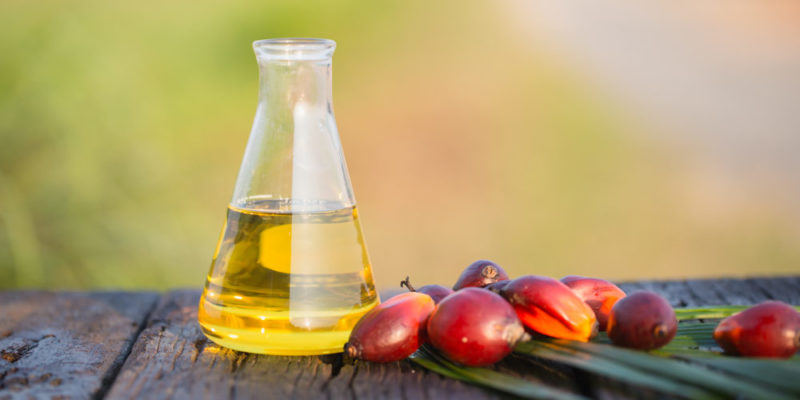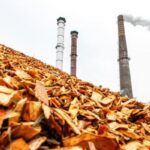We explain what alternative fuels are, their advantages and disadvantages. How they are classified and what biofuels are.

What are alternative fuels?
Alternative fuels are those fuels that were designed to replace petroleum derivatives (fossil fuels) and nuclear fuels. Oil is not only very polluting, but it has also become increasingly scarce which raises its price.
It is believed that alternative fuels are more economical and less harmful to the environment but that is not always the case. Because they are new fuels, in many cases their development is still expensive, and there is still a lot of research ahead.
The search for this type of fuel began more than 150 years ago, when fossil fuels began to replace wood.
Advantages and disadvantages of alternative fuels

When talking about biofuels, advantages and disadvantages can be identified.
- Advantages:
- Lower CO emission2 Alternative energies help reduce the greenhouse effect thanks to the fact that they practically do not emit CO2. This was one of the main reasons why we began to venture into this type of fuel.
- It is a way of recycling For the production of alternative fuels, animal excrement or garbage is often used.
- are renewable. As they are produced from sources that are practically inexhaustible (such as agricultural or livestock materials), alternative fuels belong to the category of renewable energies.
- preserve fossil fuel reserves. Thanks to the fact that they use other natural resources, the use of fuels such as gasoline is limited. This is beneficial for future generations, since they will have fossil fuel reserves.
- are biodegradable Alternative energies are cleaner, not only because of the negative consequences that a spill can generate (which are less than those caused by a fossil fuel spill) but also when they are burned, since they produce less toxic gases than when they are burned. fossil fuels.
- Economical. The generation of alternative fuels is less expensive than that of fossil fuels because the latter are becoming increasingly scarce, making them more expensive. Likewise, the generation of alternative fuels has a cost that will become increasingly lower the more knowledge and technology regarding their use advance.
- Disadvantages:
- Pollutants While it is true that these fuels were designed to reduce environmental pollution, some still have a negative environmental impact (some when produced, others when used, and others at both stages).
- Impact on nutrition As they are produced, in many cases, from grains that are also used as food, this can have an impact on their prices. Thus, eating becomes more expensive for people and also for animals. For example, pigs feed on soybeans, which are often used as raw materials to produce alternative fuels.
- Tree felling. Deforestation can be one of the effects caused by this type of fuel. This has consequences for biodiversity, which is threatened. This not only affects the plants or trees but also the animals that live in them.
- Soil depletion. The generation of alternative fuels can have a negative impact on soils, depleting their nutrients and rendering them useless in the future.
What are alternative fuels?

There are different types of alternative fuels, which have been developed over the last 150 years. Some are:
- Methanol Specialists estimate that although currently no more cars are manufactured that can be powered by this fuel, it is expected that it can be used as a source of hydrogen in future electric cars.
- P series fuels This name is known as the combination of methyltetrahydrofuran, natural gas and ethanol, which can fuel flexible fuel vehicles. The mixture can be used alone, or added in some quantity to gasoline.
- Natural gas These are, in fact, several gases that can be used as fuel. It is a mixture of methane, butane, ethane and propane, which has methane in a greater proportion. It is a less polluting, safer and more renewable material than fossil fuels, although the methane generated in the production of natural gas generates a greenhouse effect.
- Electricity Stored in a battery, the electricity can be used (instead of fossil fuel) to power cars. In this case, the energy is produced with an electrochemical reaction from the combination of oxygen and hydrogen, avoiding combustion and pollution.
- Hydrogen When mixed with natural gas, an alternative fuel is produced that, like electricity, can be used to power automobiles. Hydrogen is used to power vehicles that have internal combustion engines and those that have electric batteries. As long as hydrogen is used in pure form and not combined with other fuels, it does not emit any pollutants.
- Biodiesel This fuel is made from animal fats or vegetable oils. One of its advantages is that it is biodegradable and does not pollute, in addition to being a safe material. Biodiesel can be used in vehicles that have diesel engines.
- Bioethanol It is the most widely used alternative fuel today and is easiest to produce. Because it is found in enormous quantities, it is estimated that in the future it will be one of the most taken into account options because it will be able to supply demand. It is usually produced from corn, sugar cane, beets or wheat. There is a global controversy about the use of bioethanol because, as it is produced from raw material that is also food for living beings, some speculate that food prices will increase because there will not be enough to produce bioethanol and sustain the food. There is also another negative opinion, because many assume that deforestation will greatly increase to use large areas of land for crops that are used to produce bioethanol.
- Biobutanol This fuel is the result of a fermentation equivalent to that of ethanol and sugar cane, beets, sorghum, corn or wheat, among others, are used for its production. It is one of the newest options and better performance is obtained than with ethanol. It can also be produced from bagasse, straw and stems of some crops, which are products that compete less with food production.
Biofuels

Biofuels are a type of alternative fuel, produced from biomass. Biomass is the organic matter that comes from a plant or animal.
These organic materials are converted into energy from different processes such as pyrolysis, combustion, gasification and anaerobic digestion.
They are part of the alternative fuels mentioned above, and are part of the renewable energy sources.
Continue in: Biofuel
References
- «Alternative fuels» in En Buenas Manos.
- “Top 8 alternative fuels” in Environmental Sciences.
- “Alternative fuels” in Fuel Economy.





